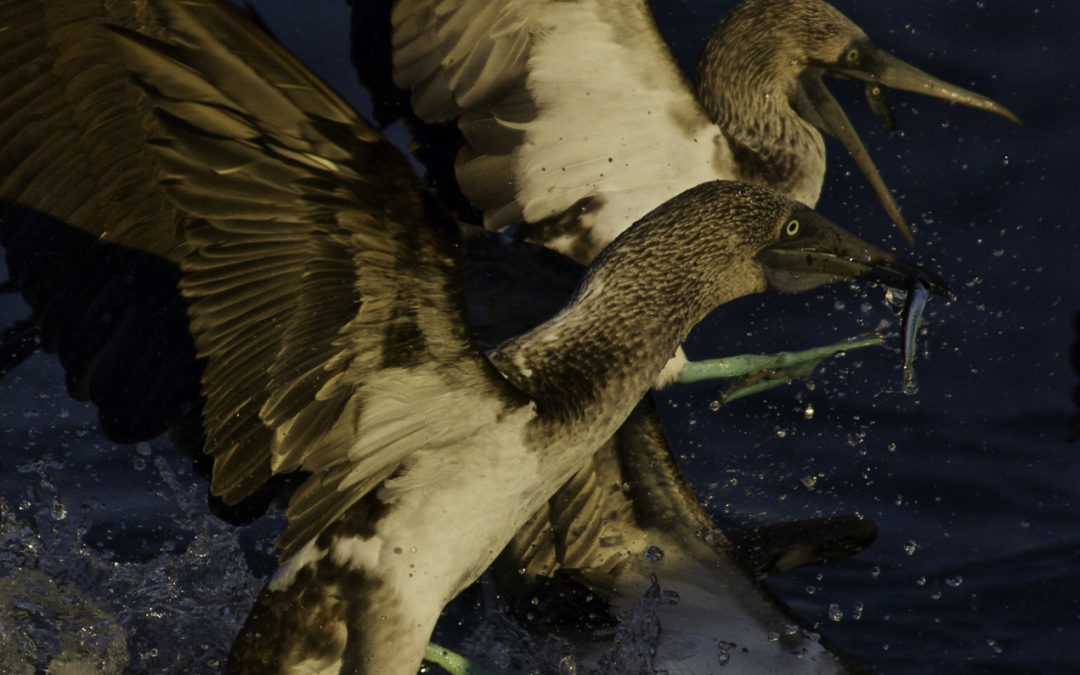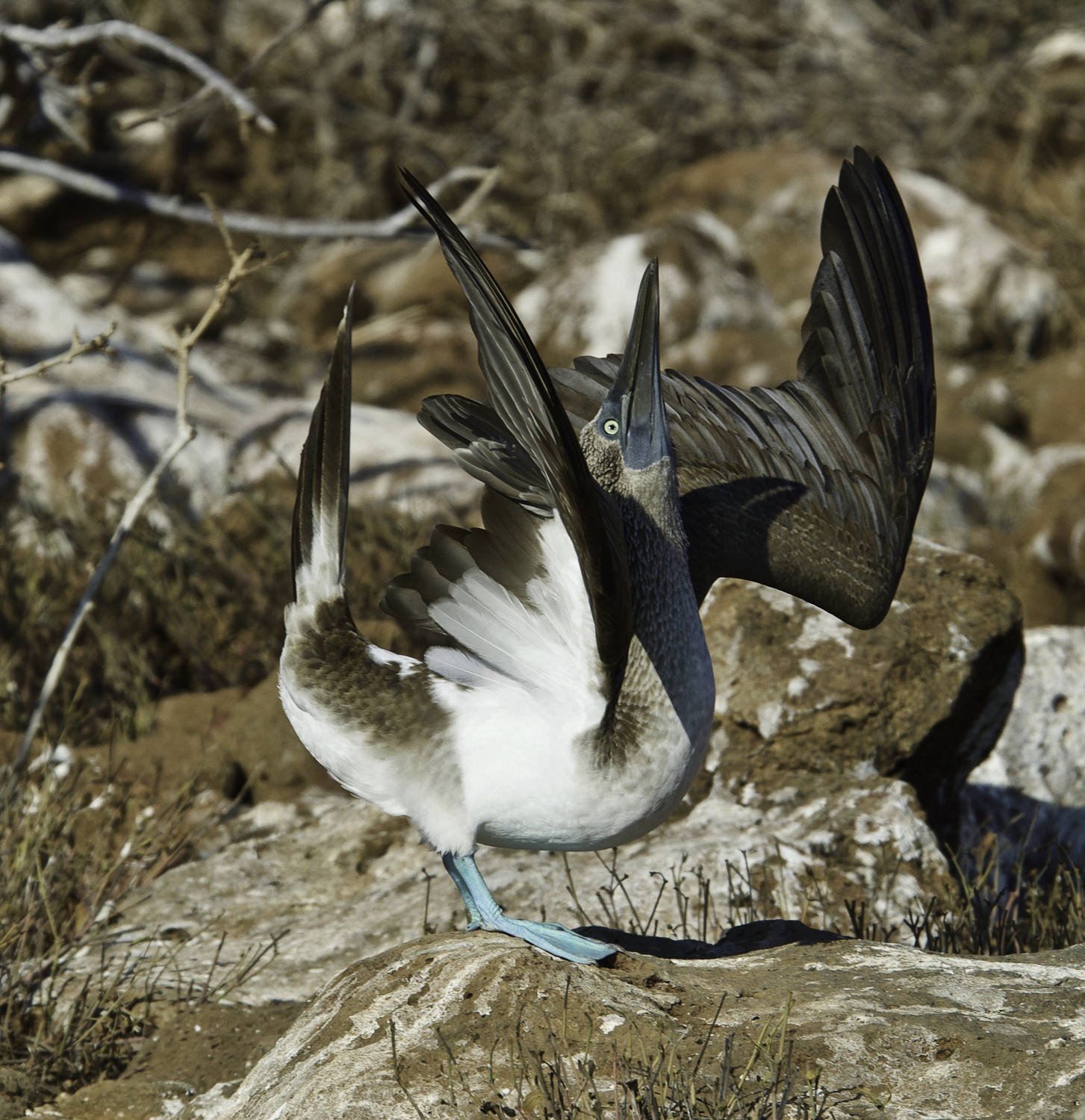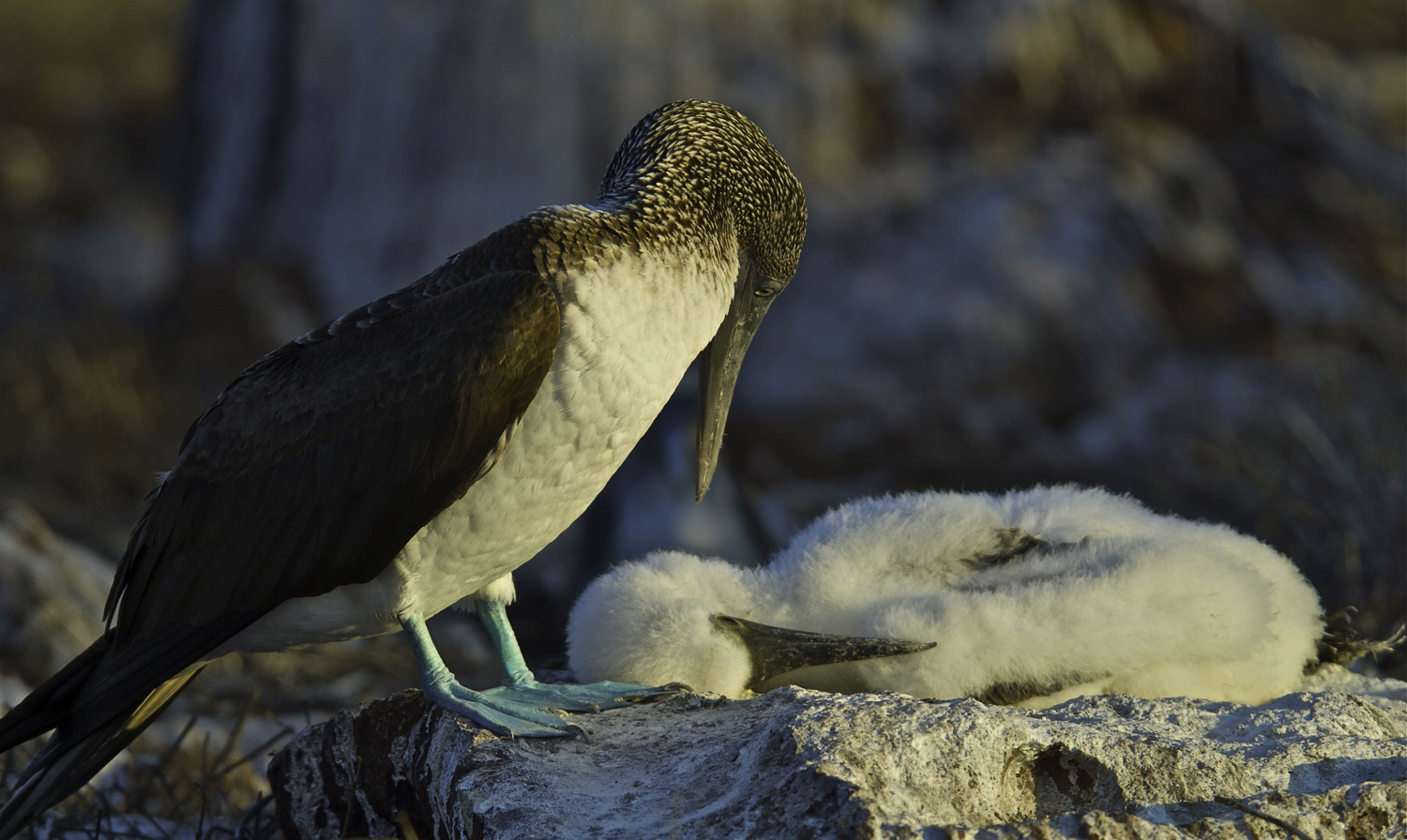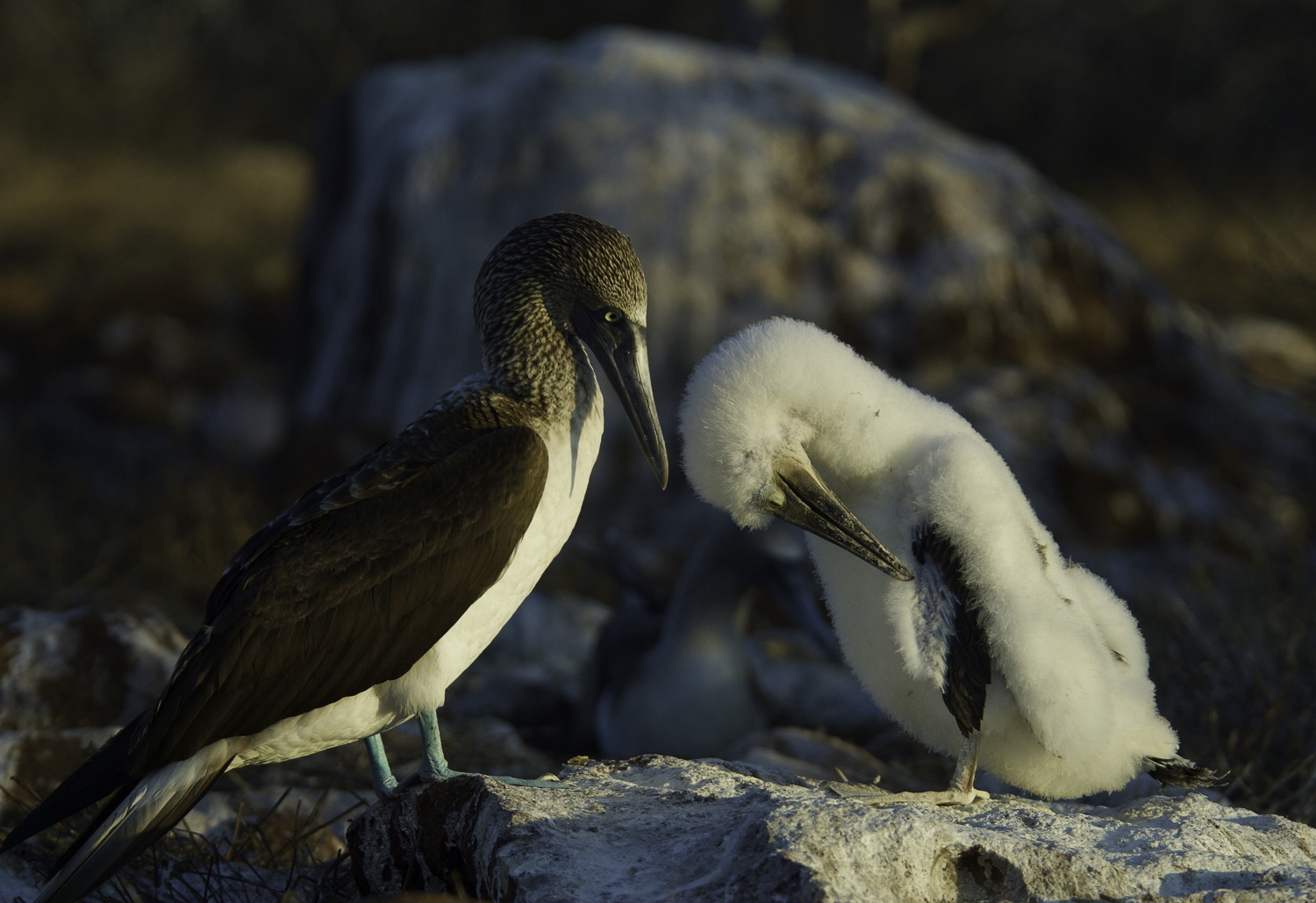ePostcard #25: Blue-footed Boobies (Galápagos)
Blue-footed boobies live along the western coasts of Central and South America, from Mexico to Peru. The Galápagos Islands population includes about half of all breeding pairs of blue-footed boobies. These beautiful seabirds are easy to identify by their distinctive blue legs and feet, streamlined body shape (think divers!), and their 5-foot wingspan. Like other boobies, they nest and roost at night on land. At dawn, blue-footed boobies take to the air in search of food, sometimes fishing in large cooperative groups. Boobies are strong fliers and have excellent eyesight, and are constantly scanning the sea for schools of small fish, such as anchovies. When their prey is sighted, these remarkable seabirds utilize the physical adaptations that make them exceptional divers. They fold their long wings back around their streamlined bodies and plunge into the sea from as high as 80 feet, often hitting the water at speeds up to 60 mph. Boobies can also dive from a sitting position on the water’s surface.
The mating season for blue-footed boobies occurs between June and August. Mating is preceded by an elaborate courtship ritual, which begins with the male presenting the female with a small stick or stone. He then tips his beak, tail, and wing tips to the sky, whistles, and marches around the female with a high-stepping strut, showing off his fine blue feet. The bluer the feet, the more attractive the mate. It’s interesting to note that females tend to have bluer feet then males. Once a match is made, the pair often remains together for life. The female lays two to three eggs, which both parents take turns incubating and keeping watch for predators. Boobies lack a brood patch, instead using their large webbed feet to keep the eggs warm. Eggs hatch after about 45 days, and the chicks are fed regurgitated fish by both parents. Young boobies will stay with their parents for about two months.
Many of us love the color blue in birds, such as the mountain bluebird or the Steller’s jay. The color blue, which is regarded as a “structural color” in feathers, results from the interplay between light and the microstructures (barbs and barbules) that make up the feather. Pigments are not involved in structural coloration, which results when various wavelengths of light are reflected, amplified, interrupted by, or absorbed to varying degrees by microstructures in feathers and skin. Keep in mind that these microstructures are “built” at the scale of wavelengths of light, whether they are in feather barbs and barbules or in the skin covering the feet and legs or the bill. Ah, evolution! The blue color of the feet and legs of the blue-footed booby is produced by essentially the same structural mechanism that results in blue feathers except that in place of keratin, a matrix of collagen in the skin scatters the light. Just as with feather color, the color of a bird’s bare parts, including bills, eye rings, legs, feet, and fleshy ornamentation are used by females in assessing mates. Studies of female blue-footed boobies have demonstrated that the male’s bright blue feet are used in assessing the breeding fitness of potential mates.
To help build global awareness, we would appreciate it if you would share this post with your friends and colleagues. Please choose one of the options below which includes email and print! Thank you.






I didn’t know (though I probably should have 🙂 that the blue in their feet is produced by a structural mechanism like feathers not pigment. Fascinating and Beautiful! It looks like you got to see the mating display as well as young which must have been quite special. Did you see them dive? Hard to imagine these birds, that look so comfortable on land, plunging into the water at 60 mph to catch fish! Incredible!
Thanks! I’ve seen blue-footed boobies plunge-diving in the Galápagos and in Mexico’s Sea of Cortez (Gulf of California) but I’ve never managed to photograph the divers.
Such beautiful birds. Love how the mother is looking down on her baby!!! Thanks again
Exquisite photos Audrey , very intresting to learn about how they get such vivid cerulean blue.
Fascinating detail about all aspects of their blue feet. Thanks, Audrey for your enlightenment.